What is a Saint?
In the Catholic Church, the saints are ordinary people like you and me who made it to heaven. They’ve done nothing that you and I cannot do, if we persevere in following Jesus Christ and living our lives according to His teaching.
Catholic devotion to the saints is nothing more than respect and admiration for the memory of the deceased heroes of the Church. We honor them as men and women of heroic virtue who can serve as our role models. They were no more perfect than are we; but, at the end of their lives – and hopefully, ours – they received from Our Lord his words, “Well done, good and faithful servant.”
We also ask the saints to intercede for us. Have you ever asked anyone to pray for you when you were having a hard time? That is how Catholics “pray to” the saints – we pray with saints, not to them. As the Letter of James says, “The fervent prayer of a righteous person is very powerful.”
Well-known saints like those below often are remembered in a special way on particular days during the year.
January – February – March – April – May – June
July – August – September – October – November – December
This Weeks Saints
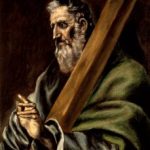
November 30
St. Andrew
___
First Sunday of Advent
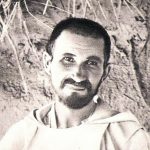
December 1
Bl. Charles de Foucauld
___
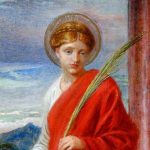
December 2
St. Bibiana
___
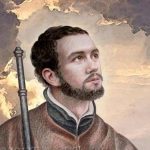
December 3
St. Francis Xavier
___
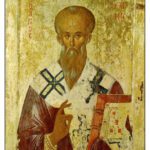
December 4
St Clement of Alexandria
___

December 5
Bl. Philip Rinaldi
___

December 6
St. Nicholas
__
December 3
St. Francis Xavier
Francis Xavier was born in the Kingdom of Navarre on April 7, 1506. Nobly born, his father was the privy counselor to King John III of Navarre. When he came of age he was sent to Paris to study philosophy at the University of Paris. where he planned to eventually become a professor.
He shared rooms with Peter Favre, and both young men became good friends with Ignatius of Loyola. worked tirelessly to have Francis recognize his vocation to the priesthood. At the age of 24, Francis made his spiritual commitment, and with Peter Favre in 1534, joined Ignatius’s little community, the infant Society of Jesus. Together at Montmartre they vowed poverty, chastity, obedience, and apostolic service according to the directions of the pope. Francis was ordained a priest in 1537 in Venice.
At that time, Portugal was actively colonizing the port city of Goa. Disturbed by the waning faith of the Portugese settlers, the King of Portugal asked the Pope to send missionaries to the region. The pope chose the Society of Jesus, and Ignatius chose Francis. On his 34th birthday, he sailed to India, knowing he would probably never again see his friends who remained behind.
For the next 10 years he labored to bring the faith to such widely scattered peoples as the Hindus, the Malayans, and the Japanese; as well as serving as provincial of the newly established Jesuit province of India. He spent much of that time in India, but also traveled to the Malaysia, Indonesia, and Japan. He baptized some 40,000 converts..
Wherever he went he would seek out and help the poor and forgotten. He traveled thousands of miles, most on his bare feet, and he saw the greater part of the Far East., Xavier lived with the poorest people, sharing their food and rough accommodations. He spent countless hours ministering to the sick and the poor, particularly to lepers. Very often he had no time to sleep or even to say his breviary but, as we know from his letters, he was filled always with joy.
Xavier went through the islands of Malaysia, where he baptized the first Japanese convert. Intrigued by the tales of Japan, he learned enough Japanese to preach to simple folk, to instruct, and to baptize, and to establish missions for those who were to follow him. From Japan he had dreams of going to China, but this plan was never realized. Before reaching the mainland, he died. His remains are enshrined in the Church of Good Jesus in Goa. He and Saint Thérèse of Lisieux were declared co-patrons of the missions in 1925.

“No-one may ever excel in great things, who do not first excel in little things.”
St. Francis Xavier
December 6
St. Nicholas of Myra

St. Nicholas was of Greek descent, born to wealthy parents in Asia Minor in the 3rd or 4th century. Both of his parents died during an epidemic when he was a young man, leaving him well off, but to be raised by his uncle – the Bishop of Patara. Obeying Jesus’ words to “sell what you own and give the money to the poor,” Nicholas used his whole inheritance to assist the needy, the sick, and the suffering. He became the bishop of Myra in Turkey and many stories attest to his generosity to the poor and hungry, especially children.
The Greek histories of his life agree he suffered an imprisonment of the faith and made a glorious confession in the latter part of the persecution raised by Diocletian, and that he was present at the Council of Nicaea and there condemned Arianism.
According to another tradition St. Nicholas was not only there during the Council of Nicaea in 325, but so far forgot himself as to give the heretic Arius a slap in the face. The conciliar fathers deprived him of his episcopal insignia and committed him to prison; but our Lord and His Mother appeared there and restored to him both his liberty and his office.
After his death, the legend of his gift-giving grew. St. Nicholas was transformed by the Dutch into the legendary character called Sint Nikolaas or by his nickname Sinterklaas. When Dutch immigrants brought his gifting traditions to this country, he eventually evolved into Santa Claus and became a part of the Christmas tradition.
“The giver of every good and perfect gift has called upon us to mimic Gods giving, by grace, through faith, and this is not of ourselves.”
– St. Nicholas of Myra
